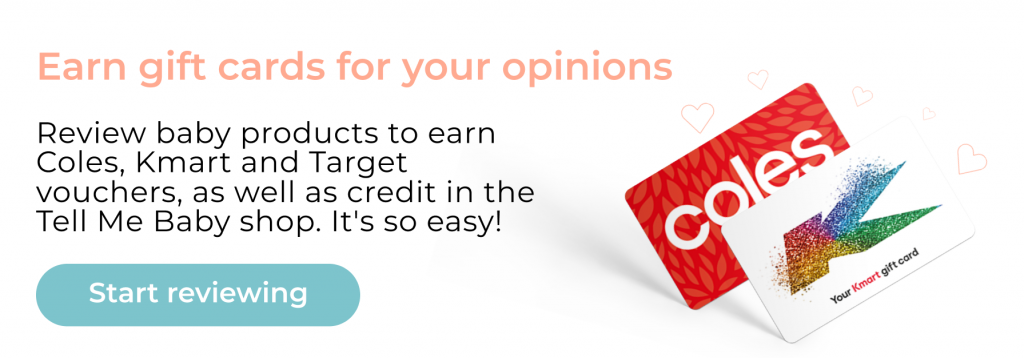How to help your toddler understand their big emotions

Brought to you by b.box.
They may be small, but as all parents know, toddlers can have some pretty big emotions.
The first thing to remember is that this is completely normal. Like everything else in life, toddlers need to learn how to recognise and release their emotions, which takes time (and a few meltdowns).

“We all struggle with our emotions”
In our latest Facebook Live chat, sponsored by b.box, we talked to Anna Davis. Anna is a certified conscious parenting coach and emotional intelligence trainer. She says toddlers need some help articulating their emotions.
“The first thing to understand is we all struggle with handling and understanding our emotions at times, but unlike a toddler, we know what we’re feeling and how to articulate it,” says Anna. “Whereas the toddler doesn’t have those emotional intelligence skills or vocabulary to articulate it.”
What many people don’t realise is that toddlers experience the same emotions that we do, but without the appropriate skills, they end up expressing their feelings in ways that might not make sense – so we need to help them.
Watch the full Facebook live chat below:
“Start saying yes to the emotion”
“To do this, we need to accept their emotions,” says Anna. “All of them – the good, the bad and the ugly, which can be really hard.
“When we start saying yes to the emotion and no to the behaviour, we’re able to take their hand and lead them through the big emotions they have and start teaching them how to self-regulate themselves.
“When we say no to the emotion, we leave them to deal with big, scary feelings that they don’t understand on their own, which is really scary for them.”
Connect and redirect
The best way to do this is with something called ‘connect and redirect’, which Anna credits to Daniel Siegel, who’s the co-author of The Whole-Brain Child.
“This is where you connect to the right hemisphere, which is in charge of their big emotions,” says Anna. “And then you redirect them to their left hemisphere. So I’m talking about their left brain, which is all about logic, language, facts and the order of things.”
Left brain vs right brain
We want to teach our children to be able to use their whole brain, but in order to do that, Anna says we need to lend them our left brain.
“Let’s say you’re at a picnic and you and your child have taken watermelon,” explains Anna. “And someone’s going to take some watermelon and your child’s gone, ‘No, it’s my watermelon’. And she has some sort of emotional meltdown because she’s stuck in the emotional chaos of her right brain.”

Speak to the right brain
While it’s second nature for parents to jump in using left brain logic and tell their child to share – this isn’t going to make any difference to a child who’s stuck in their right brain.
“When they’re stuck in their right brain, it’s like their left brain speaks Greek and their right brain speaks Spanish. So we’re trying to speak Greek to the Spanish side of their brain, and they simply can’t hear us,” says Anna.
“So what we need to do is speak Spanish. We need to speak to the right brain and to do that, we need to speak to one of its main functions, which is emotions. The way to do that is really simple: we just need to connect to what they’re feeling and repeat back to them what we can hear they’re saying to us.
“So it might be something like, ‘My love. I can see that you’re really worried that all the watermelon’s going to get gobbled up before you get any, that must be making you feel really worried, do you feel really worried?’”
“Bring them back to a more centered place”
Connecting to your child’s emotions will start to soothe them, then you can slowly start to redirect to their left brain.
Anna says this might look something like, “‘Well, my love, why don’t we go and grab some watermelons so we make sure you’ve got enough. And then let’s go and have a look at what other people have brought to share, and we can choose something from there.’
“We’ve connected to their right brain, and we’ve then sort of redirected them with a little bit of logic. We’re bringing them back to a more centered place where they’re more whole brained.”
Teachable moments
Importantly, Anna says that later on parents should speak to their toddler about what happened at a teachable moment when they’re calm.
“A mistake that a lot of us make is jumping in to say, ‘Well, now you’ve got to go say sorry to Sally and make sure she doesn’t feel upset’, but when we try to correct them in the moment, we’re most likely going to trigger them again.”
So when should teachable moments happen?
“If the incident happened in the morning, it’s [the teachable moment] is going to be in the afternoon. Or if it happened in the afternoon, it’s going to be the next day,” says Anna.
“When you do then go to speak to your child at a teachable moment, they’re going to be whole brained. They’re going to be able to value both their logic and their emotions at the same time.
“And then they’re more likely to learn the lesson that you’re trying to get them to understand.”





